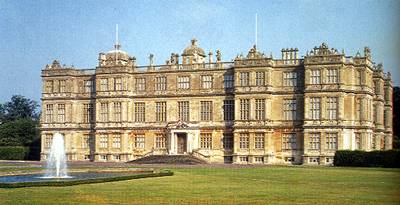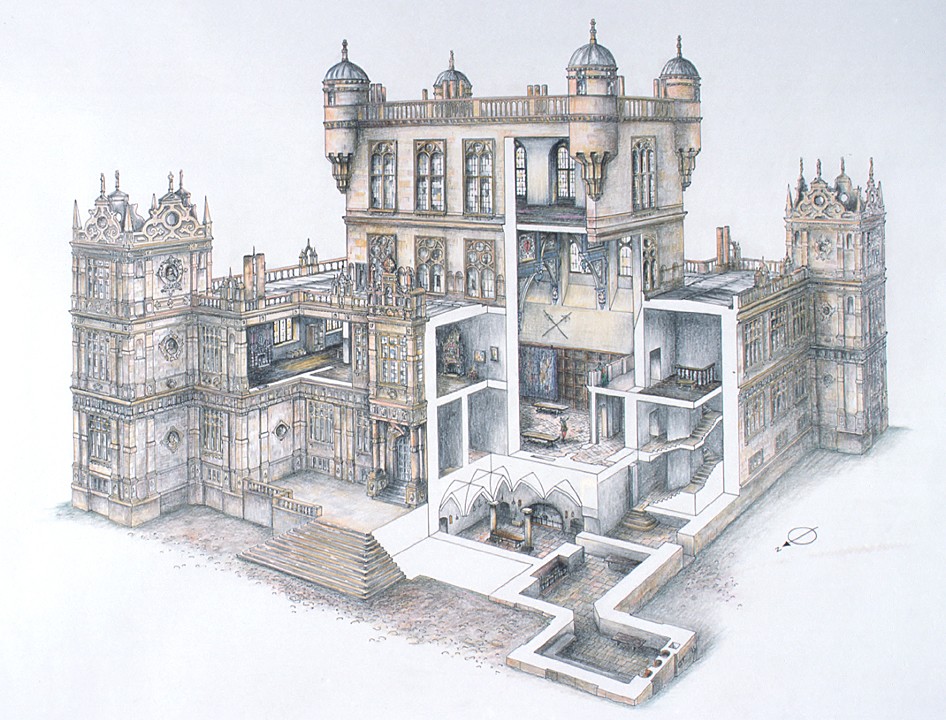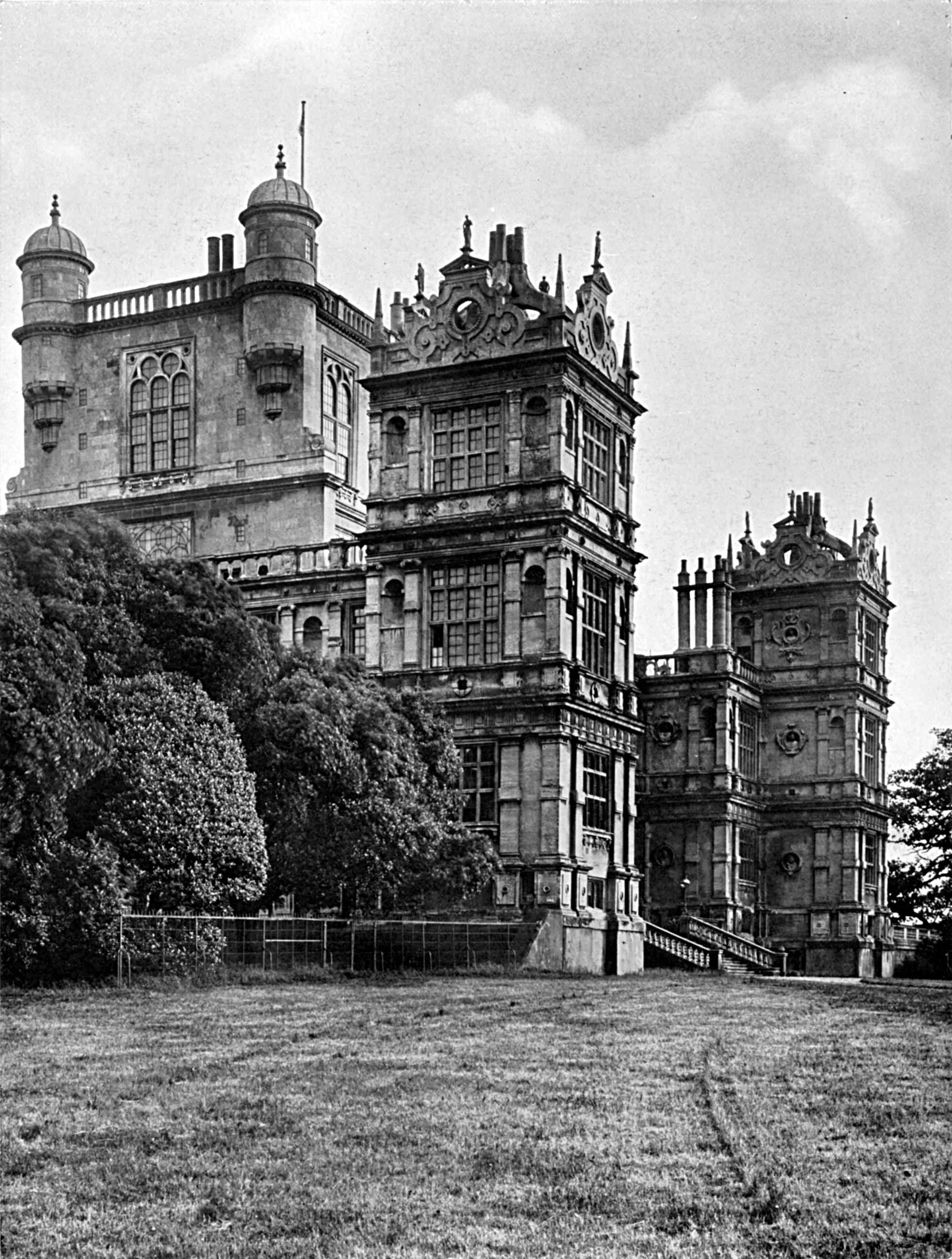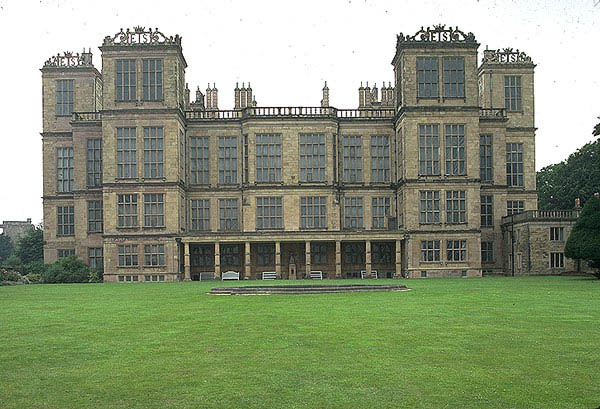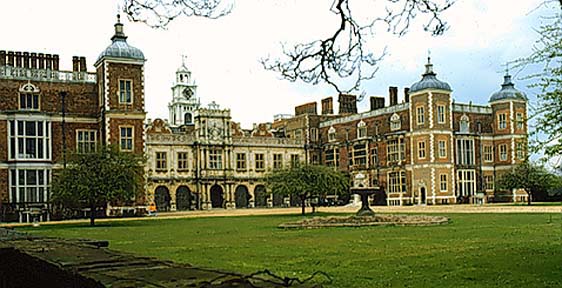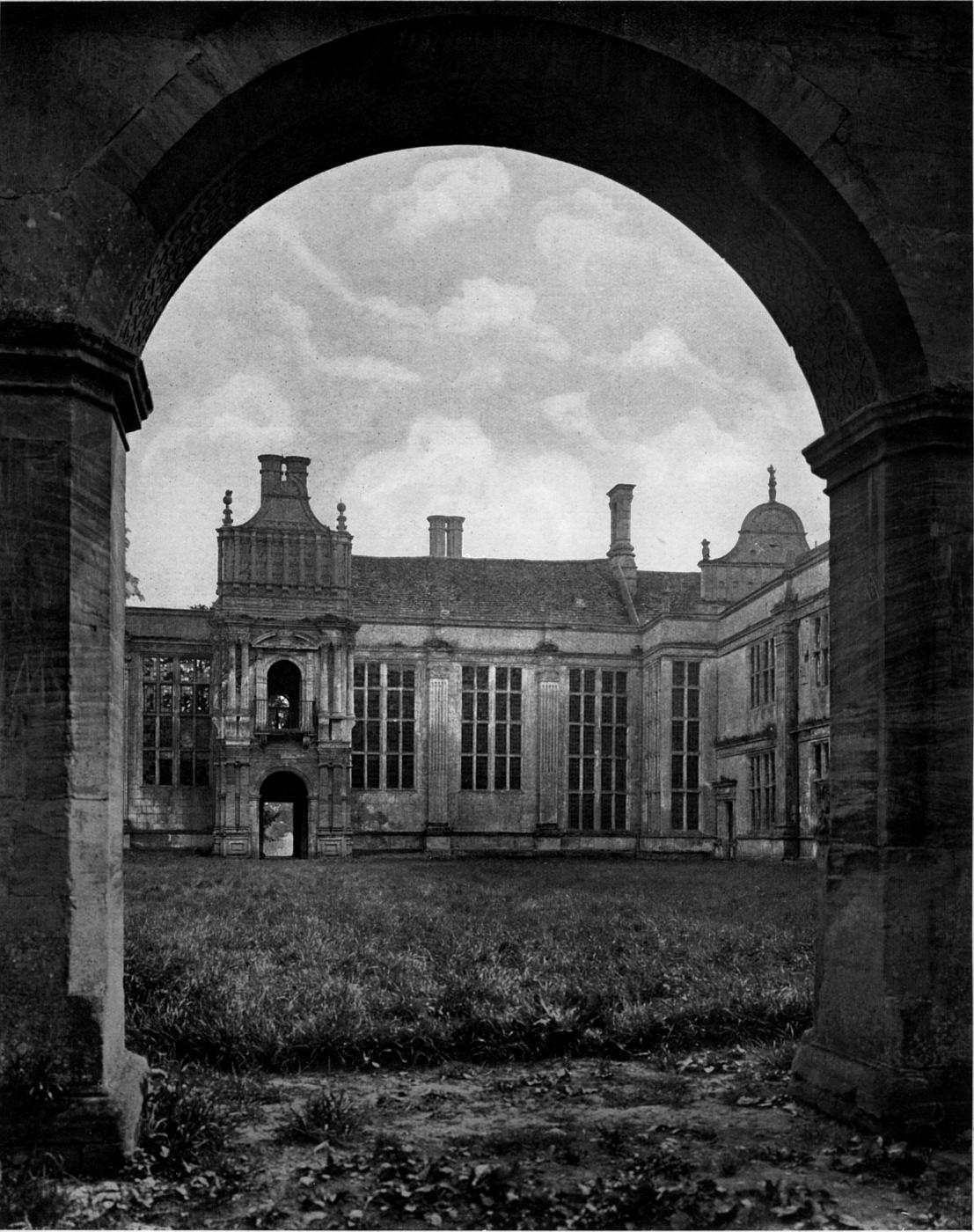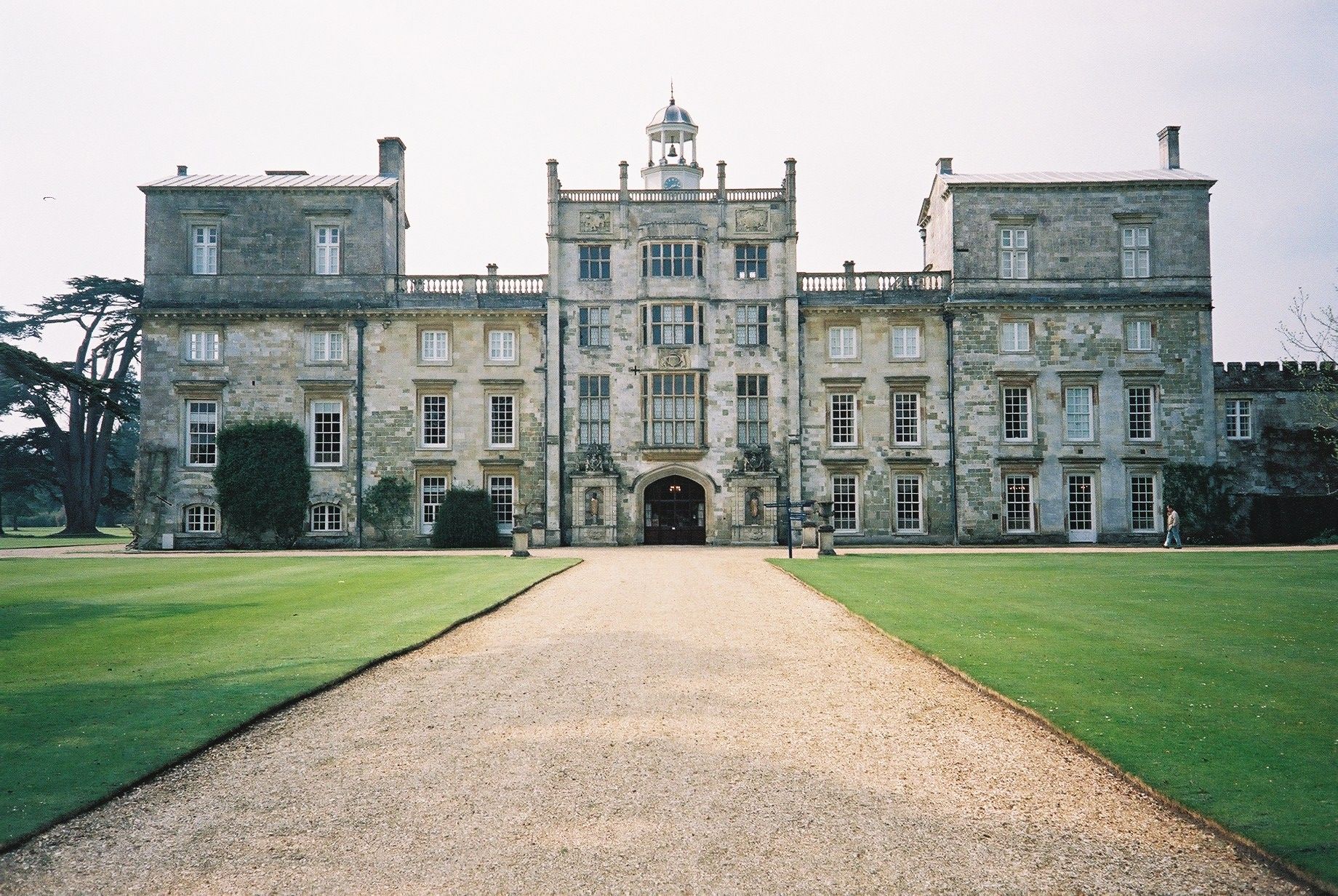The Status of the Painter and the Architect
In 15th and 16th century Italy a debate took place about the role of the
artist in terms of the representation and appreciation of classical antiquity.
In the Elizabethan court the title of Architect did not exist. Building methods
were based in early Gothic and mathematical conventions based on root 2, root
3, the golden mean and measurements were made in perch (16.5 feet).
Country house of Thynne (“Thin”), Longleat House, mainly designed by Robert
Smithson, it is the closest we have to a Renaissance villa. It was the vision of
the owner Thynne. Robert Smithson went on to work on:
Sir Robert Willoughby (a merchant),
Wollaton Hall.
Smithson was called the architect of Woolaton Hall.
and
Hardwick Hall by Smithson built for Bess of Hardwick in Derbyshire (note
the “ES” at the attic level).
James I changed the ethos of the court and there was a wish to emulate
Italian courts, particularly that of the Medici. Inigo Jones joined the court in
1605 and designed the Masque of Darkness with Ben Jonson. He introduced the
court to perspective drawing.
Robert Cecil commissioned designs for the new Hatfield Hall (1608) from
Robert Lyming. Simon Basil (Royal Surveyor), Colt for interior mouldings,
Tradescant for the gardens. Perhaps Jones designed the loggia as '10 was paid to
him for a drawing. The House cost a total of '38,000.
Jones early drawings were insubstantial but he trained himself. 1609 Paris
the Pont du Gare and Nimes. He went with Arundel to Italy in 1614. Met Scamozzi
and studied Palladio.
Painting had to moved from being a mechanical art to a liberal art. This had
been discussed by Vasari. His reputation was sought and he is now seen as the
first English architect. On return he was apppointed as the King’s Surveyor
after the death of Basil.
Banqueting House. The vision is that of the architect not the patron. The
status of the architect was discussed publicly in the argument about the masque
with Jonson.
Appointed to the planning committee and went on to be involved with Covent
Garden (like Mainon Car'e, Nimes), He worked almost exclusively for the king.
Sir Robert Townsend, Derbyshire. Norwich House, based on Jones idea. Possibly
designed by Townsend.
Sir Roger North designed Inns of Temple after the great fire, distrust of
architect, expensive and could make the patron feel remote and may not agree
with the craftsmen on good building practice so North advised patrons to design
themselves – this was the most common solution until the 18th century.
Sir Gerbier designed a house but is dismissed. by SUmmerson.
Kirby Hall, Nottingham.
Wilton House, Derbyshire, Earl of Pembroke.
Could Wren have been as great without Jones? No. There were no examples of
classical architecture oin England (although he thought Stonehenge was
classical).
Status
The idea of an architect did not exist except in a few rare cases, see
handout, quote 1, 1581. It uses the word “architectes”. It was still a foreign
word with a fluid meaning. What is a devisour? Is it someone who invents a
device?
John Thorpe design for a house (he could not have afforded to build it
himself as he was a surveyor) is a “device”, a witty invention showing the
ingenuity of the person devising it.
The best examples are Sir Thomas Tresham, the notorious Catholic, worked
stopped in 1605 when he died, there was never a roof as the workers just downed
tools and it was never restarted. Called
Lyveden New build
(National Trust). The “device” is a Greek Cross.
He also produced Rushton Triangular Lodge with its Trinity triangles. It is
three sided and owned by ENglsih Heritage. It was dedicated to the Holy Trinity
although this was not a peculiary Catholic thing to do. 1593-7. Also called the
Warrener’s Lodge. Georges (a Protestant) built a house dedicated to the Trinity
but the frieze spells out the Roman Catholic mass (which was treasonable).
He was careful as he used non-controversial symbols for the Passion of Christ
(the local constables could not read the mass). He devised it himself. So it was
possible for a gentleman to take a direct interest in the design of a building.
The distinction is between the mechanical arts and the
liberal arts (the seven
liberal arts comprised two groups of studies: the trivium and the quadrivium.
Studies in the trivium involved grammar, dialectic (logic), and rhetoric; and
studies in the quadrivium involved arithmetic, music, geometry, and astronomy).
The mechanical arts included medecine, weaving and navigation. This goes back to
Aristotle, see test 2, that includes building and architecture as mechanical
arts. It took much longer to come to England but Durer argued the case in 16th
century Germany.
See quote 3, Dr. John Dee, 1570, describes what an architect is. It is very
modern.
Jonathan Foyles theory is that Hampton Court may have been inspired by
Renaissance Italian ideas and Italian plat (“map” of property) makers were
floating around London.
The Reformation cut off links with Italy until our period when Jones goes to
Italy.
1624, Sir Henry Wooton writes a book “Elements of Architecture”, only the
second book on architecture in English. It is not a practical book but a guide
for English gentlemen, The is a steady increase in books about architecture in
English libraries in this period.
Jones rose to a very high level in court early on because of his masque
design but he continued to rise because of his network (a generation earlier he
would have been a jobbing mason like Smithson).
He was a brilliant networker and his ultimate contact was with the royal
family. There was a mutual respect, he almost fell to his knees when a painting
for Charles from Buckingham arrived. He went to Italy early on behalf of the
brother of the Duke of Rutland, Lord Roos. Did he know Italian? He was a very
valuable person as he knew Italy, painting, and he designed the Queen’s House
for the queen. But why was he not knighted? He refused it because it was too
low. (Jonson wrote about Inigo as “Marquess Wouldbe”). Inigo lived in royal
apartments.
Van Dyck had a house given to him in Blackfriars backing onto the river where
Charles visited him!
Inigo was the son of a clothworker. He is meant to have been apprentice to a
joiner and later a picture maker, the lowest of the low.
Jonson and Jones worked together from 1605 (Masque of Blackness for Anne of
Denmark, the earliest) to 1631 (Love Triumphs though Calipolis). By 1612 Jonson
had referred to Jones as a buffon. What finsihed it was Jones giving himself
prior billing to Jonson on the frontispiece (see Dillon Gordon article about the
argument). Personality clash but also a theoretical basis, see text 5.
Emblem books were best sellers across Europe, 1586 Whitney book is the first
in English. The meaning of the picture (false flatterers, snake in the grass) is
in the text below.
Design, “designo”, invention and creativity, ana argument from Vasari.
1632, Albion’s Triumph, on either side are female personifications of Theory
and Practice. By these two all works of architecture and engineering “have their
perfection”. In other words you need intellect and theory.
Jones wins as after this date Jonson never writes another court masque.
“In-and-out Medley”, a satire on Jones, was censored out by the Lord
Chamberlain, so Jones was protected by the court. The royal family supported
Jones and they boasted that the arts flourished in the Caroline court, see text
9.
The masque gives us an insight into the thinking behind the court. (Ceiling
of the Queens House moved to MArlborough House in Pall Mall, it is by Orazio
Gentileschi, 1635-8). Figure of Peace is supported by trivium and quadrivium,
nine muses, four corners are Painting, Architecture, Music and Sculpture.
Late 16th century self-portraits.
Isaac Oliver
Hilliard shows himself as a gentleman.
George Gower 1575-7 oil painting, shows himself painting.
Van Dyck self-portrait with Sunflower, gold chain was given to him by Charles
I. The sunflower perhaps shows royal favour shining on him. We don’t really
know. He was a witty courtier, and had servants and even a carriage pulled by
white horses he used to travel round London.
He was asked to put a painting of the queen on an aarchitectural background
but he refused as he had not painted it. It is unthinkable that Holbein would
have refused a request from Henry VIII, showing how far painters had come.
Nathaniel Bacon is a gentleman painter although this was extremely unusual.
Drawing a design was acceptable for a gentleman but not painting. Drawing needed
perspective and geometry and was not messy.
Pink meant yellow in England in the 17th century and Bacon invented his own
pink colour (i.e. yellow).

